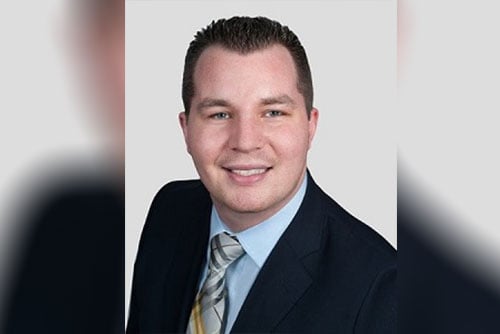

Kyle Burnett (pictured) learned what not to underwrite before he learned what to underwrite. It’s an odd way to start a successful career in property insurance underwriting, but Burnett insists it was “the best thing that ever happened” to him. Essentially, he learned how to underwrite and manage a property portfolio by watching and correcting other people’s mistakes.
Young guns of 2019 take note. The property insurance marketplace is transitioning and correcting after years of inadequate policy rating, terms and conditions. Insurers are scaling back the amount of capacity they’re willing to put up, they’re changing their risk appetites, and they’re looking to diversify their portfolios to avoid accumulation of risk in higher hazard areas. All of this spells opportunity for young underwriters (like Burnett was 10-years-ago) who are willing to watch and learn.
Burnett started his insurance career in the mailroom of WKFC, a small Long Island-based MGU at the time, which has now become part of RSG Underwriting Managers. After that, he went on to work for Partner Re, Everest and eventually XL Catlin (now AXA XL), which he joined as regional vice president to help rebuild the E&S portfolio. At each of these four companies, Burnett was either given the task of cleaning up a struggling E&S property portfolio or building one from scratch. That’s why he’s been able to learn so astutely from other people’s mistakes, because he’s been handed some tough portfolios, he explained.
“When I joined XL, the property portfolio was in rough shape. We made the decision to do a complete portfolio reset, gutting $88 million and starting the portfolio over from around $1 million,” said Burnett. “Our plans and our guidelines started to work well, and a year-and-a-half later, the property division is one of the most profitable divisions at AXA XL. We just hit everything in stride, and we were careful with our timing. We were non-renewing business when others were diving in harder, and now everyone’s non-renewing and we’re able to clean-up and take on some good risks.”
Today, Burnett is head of E&S property for AXA XL’s North American property group and is responsible for the property wholesale portfolio, which includes everything from managing relationships to developing guidelines to keeping the company profitable amid challenging conditions – and challenging they have been in recent years. The property market is in need of quite an “aggressive correction” after years of competitive but soft market pricing. In an attempt to at least break even on their books, carriers are raising rates, and “clients don’t like that,” Burnett added.
“I believe in underwriting each and every deal,” he told Insurance Business. “I’m not going to label an entire class and say: ‘This class is getting a 10% rate increase; this class is getting 5%.’ Each account has to be underwritten on its own merits, and we do that early and often. My advice to our distribution partners is to get your renewal submissions in as early as possible, so that we can start to have those discussions and they can prep their clients. I don’t like last minute surprises. The truth only hurts once; the lies come by death of a thousand cuts. I don’t want to convince our distribution partners of anything otherwise.”
In addition to learning from the mistakes of others, Burnett has also learned a few lessons of his own. While he says he would do what he did with the struggling XL portfolio “100 times over, again and again,” there is one thing he would change. He would have a lot more excess business on the books.
“A lot of our deals at the time were first dollar primaries, meaning we were the first to write the checks. That certainly hurt us, and we could have mitigated a lot of that risk,” he said. “We’ve changed that now. Today, our portfolio is about 60:40 excess to primary. That’s partly because we’re in a good market where we can finally get some money in excess for some of these deals as well.
“As a whole, one thing property underwriters have learned in the past few years – especially following Hurricanes Harvey, Irma and Maria in 2017 – is that too many people had all their eggs in one basket. Too many insurers had risk accumulation on the coast, and they weren’t prepared to have a well-balanced portfolio so that not all of their risks got crushed. At AXA XL, we studied our portfolio to find mistakes in the past so we could work to correct them. We’re always learning from our mistakes.”
